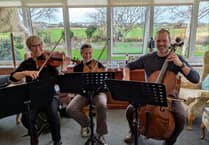In 2010 a decision was made to merge Anglesey and Gwynedd’s Planning Policy departments, partially in light of the costly and lengthy process involved with generating a Local Development Plan (LDP).
While both councils continue to maintain their own separate planning departments and committees, a formal plan is a legal requirement to outline the guidelines and policies they adhere to.
With the current JLDP ratified separately by both authorities in 2017, they say a shared plan has meant substantial cash savings as well as the duplication of work, but with concerns raised over the current blueprint, Cllr Mike Stevens believes Gwynedd should go it alone in future.
Speaking at a communities scrutiny committee meeting, he said: “I can never understand this, Anglesey and Gwynedd are the only two counties that work together on a plan.
“We have officers paid by ratepayers in Gwynedd and they are working on things for Anglesey, I don’t understand why we have councillors in Gwynedd also pontificating on what goes on in Anglesey when they’re elected by the people of Gwynedd.
“Conversely, I don’t understand why we have councillors on Anglesey who are not accountable to the ratepayers of Gwynedd, pontificating on matters in Gwynedd, we have our own needs and requirements.
“The world has changed dramatically, its a different world to 2010. I’m all for collaboration but why with Anglesey? We have a bigger landmass border with Conwy and Powys, so why are we tied at the hip to Anglesey? It’s time we had a brand new plan for Gwynedd.”
The current JLDP forms the backbone of both councils’ planning policies and earmarks where up to 8,000 homes should be built and employment allocated over a 15 year period, but with the statutory review process having just started, pressure has ramped up on the need to revisit the policy in light of a growing housing crisis, Brexit and the pandemic.
Responding to Cllr Stevens, Gwynedd Council said there was a “strong business case” to work together.
“The benefits to both authorities include bringing together officers from both councils who have a range of planning expertise which have been available to both authorities in order to plan towards meeting the area’s future needs.
“The creation of a more resilient joint planning policy team has provided increased capacity to prepare a robust JLDP based on agreed shared vision for the area.
“The joint working has offered increased flexibility as uniting specialist knowledge and effort to put greater weight behind arguments to achieve common goals.
“The arrangement has also resulted in significant cost savings for both councils as there is a range of expertise within the Joint Planning Policy Service and avoiding duplication of costs associated with preparing separate plans.”
They added: “The Joint Planning Policy Service has now begun the process of reviewing the plan with a public consultation underway on the Review Report which will inform the production of a revised plan.”





Comments
This article has no comments yet. Be the first to leave a comment.